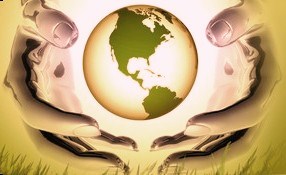The Dynamic
God

The Bible story documents how from the beginning, humanity started
going astray. First Adam and Eve rebelled against God’s explicit command, then their son in anger killed his
brother. Ten generations down, by the time of Noah, evil was rampant. Here God saw the need to restart the
experiment of life – to “reset” the creation (Gen 6:5-7).
The word translated “regret” also carries the meanings of “repent” or “reconsider” – to
change one’s mind. God reconsidering what to do implies that divine design is not always perfect – God is not as
predictable and omniscient as most of us have assumed. Rather the Bible description of how God manages the
creation is consistent with what we observe in the world. God is a dynamic Presence, varying its manifestation
to fit the varying reality of a world intrinsically imbued with free will – “I will be that which I will
be”.
God is ultimately in charge – his hand doesn’t wane short (Num. 11:23). Yet, God clearly
underestimated the recalcitrant human nature, which we must constantly remind ourselves was created by God. The
Flood was a corrective measure to right a world gone wrong where nothing else had worked. It was not rescinding
any previously stated covenant or intent. The first covenant with humanity was made after the Flood – after life
spans were drastically reduced, diet expanded to include meat, and a list of moral and civil guides given (Gen.
9:1-17). Just prior to this, God had guaranteed consistency in nature – days and seasons would continue while
the earth remains. (8:21-22).
After the Flood failed to reform humanity – five generations later, humanity again
rebelled against God trying the build the Tower of Babel (11:1-9) – God decided to start with one individual,
Abraham, hoping that his influence would eventually extend to all humanity (12:3).
A parable in the ancient Jewish source, the kabala, probes the “spiritual physics” of
why the creation went so drastically astray by the time of Noah. The parable speaks of a king who wanted a
palace. He hired an architect to build it. But when the king went to see the palace, he wasn’t pleased. Of
course, he would be angry at the architect. The king symbolises the Creator God. The architect is nature, guided
by Elokiim, the aspect of God made manifest in nature. Again we are forced to confront the paradox of a
logically faultless Creator finding fault within an aspect of its own creation.
In human terms, God seems to be learning what it means to run a universe literally
permeated with free will that God had granted. The Bible makes clear in incident after incident that the Eternal
God can only be described by the dynamics of a verb reaching into the future – “I will be that which I will be”
rather than the static image of “I
am”.
Based
on: God According to God, Chapter 5, by Gerald L. Schroeder (HarperOne, New York, 2009).
Australian readers may find better values at Fishpond which sells discounted books and delivers them
postage-free.

| 

 Facebook
Facebook Twitter
Twitter Digg
Digg Stumbleupon
Stumbleupon